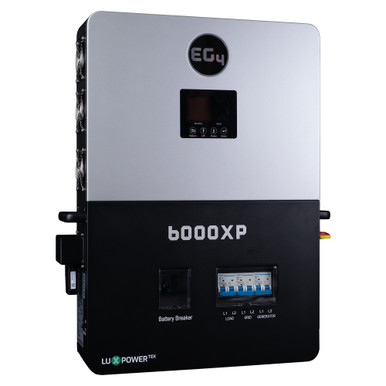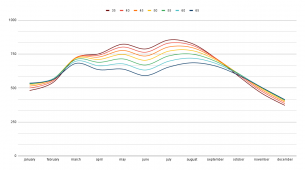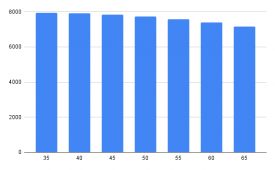mountkay
Camper
Hello!
(Mods feel free to move this to a different thread category if it seems like it belongs somewhere else).
I am moving into a new home on my property finally after living off-grid on the property in a camper for 8 years.
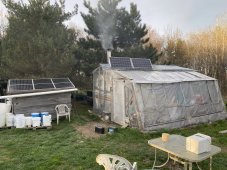
I’m keeping my new home off-grid.
I had a solar engineer help me with plans for the wiring and ground mounted panels so I can make sure I pass inspection.
I got the ground mounted system all set up with the help of friends and family.

6.8KW (20x 340w Seraphim Panels). Iron Ridge racking.
I purchased a 6.5KW EG4 inverter, and (2x) 5KW 48v EG4 batteries.
I was planning on keeping my system at 120v.
Unfortunately I decided to go with a 240v well pump; I figured I could use a transformer or voltage converter for just that one appliance and I would be fine.
But… I just found out my water heater is also 240v… and it uses 3-4KW. They told me it was 120v (I got a manufactured home)… so it seems using a transformer is no longer a feasible idea.
Rather than spend time and money changing to a propane heater and still getting a transformer for the well pump, I think I would rather get another 6.5KW EG4 inverter so I can just make 240v split phase.
What do you think?
Here is the wiring diagram I received from the solar engineer:
(It’s for the 120v system I originally planned on doing)
Sorry, it’s split into multiple pictures so it shows up clearer.

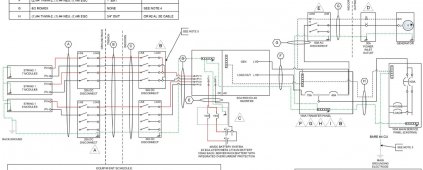

Can you spot any mistakes?
My next questions to him will be about the ground wire coming from the panels into the house to the inverter… I don’t know where I would attach it to the inverter.
Also I don’t understand where I would run a ground wire from the inverter to the battery bank.
Also he has me putting 2 strings of panels into parallel. But, the panels are 9.02 ImpA and the inverter says it can only handle 18 ImpA… (so it would go over current at full sun? Maybe he just expects this never to happen as it’s rare the panels will be at full strength?)
So I decided to draw up my own wire diagram based on what it might look like as a 240v system with a second 6.5KW inverter.

How does it look?
I just brought the ground from the solar panel rack past the inverter and straight to the sub panel.
No ground going to the batteries…
And rather than put 2 stings of panels in parallel I just put one PV string to the 2nd inverter (it would still be good to know if (2x) 9.02 ImpA stings in parallel would be okay for this inverter rated at 18 ImpA).
Also, I know in Wills video on this 240v system he has the grounds and neutrals on the same bus bar in the sub panel. I didn’t do it this way because idk if it will pass inspection, or if separate bars are required if I have the generator hooked in there.
I didn’t put the generator backup in, as I’m not sure how it would work because it only makes 120v. I believe in the original 120v plan he has it connected to a muli-tap connector so it split and could power the house directly, or power the inverter.
I’m guessing if I switch to 240v I can no longer have it connected to the sub panel… and will have to connect it directly to an input on one of the inverters…
Will it work putting a 120v input to an inverter if it’s set up to output 240v?
This would allow me to charge the batteries if there’s not enough sunlight, but it wouldn’t help me if one the inverters broke….
It would probably be better to have it wired into the sub panel AND inverter if that’s possible.
Also, does anyone know a good replacement for the battery bus bars? Wills recommended link is out of stock. (I’ll try to search this in the forums, I cant be the first to have asked).
<3 Anyway if you’ve read this far, I hope you enjoyed my story. I’ve been a huge fan of Will for many years, I don’t know why I didn’t join here sooner. He is very inspiring (Thanks Will!) And thank you for any responses. It’s much appreciated. I can’t wait to live in a house again after roughing it for so many years.
Since you made it this far, here’s a bonus picture of me and my buddies 3rd year off-grid small scale farm (solar panels on the roof of the small shed there + LFP in the shed for watering, separate solar well pump system not pictured).

(Mods feel free to move this to a different thread category if it seems like it belongs somewhere else).
I am moving into a new home on my property finally after living off-grid on the property in a camper for 8 years.

I’m keeping my new home off-grid.
I had a solar engineer help me with plans for the wiring and ground mounted panels so I can make sure I pass inspection.
I got the ground mounted system all set up with the help of friends and family.

6.8KW (20x 340w Seraphim Panels). Iron Ridge racking.
I purchased a 6.5KW EG4 inverter, and (2x) 5KW 48v EG4 batteries.
I was planning on keeping my system at 120v.
Unfortunately I decided to go with a 240v well pump; I figured I could use a transformer or voltage converter for just that one appliance and I would be fine.
But… I just found out my water heater is also 240v… and it uses 3-4KW. They told me it was 120v (I got a manufactured home)… so it seems using a transformer is no longer a feasible idea.
Rather than spend time and money changing to a propane heater and still getting a transformer for the well pump, I think I would rather get another 6.5KW EG4 inverter so I can just make 240v split phase.
What do you think?
Here is the wiring diagram I received from the solar engineer:
(It’s for the 120v system I originally planned on doing)
Sorry, it’s split into multiple pictures so it shows up clearer.



Can you spot any mistakes?
My next questions to him will be about the ground wire coming from the panels into the house to the inverter… I don’t know where I would attach it to the inverter.
Also I don’t understand where I would run a ground wire from the inverter to the battery bank.
Also he has me putting 2 strings of panels into parallel. But, the panels are 9.02 ImpA and the inverter says it can only handle 18 ImpA… (so it would go over current at full sun? Maybe he just expects this never to happen as it’s rare the panels will be at full strength?)
So I decided to draw up my own wire diagram based on what it might look like as a 240v system with a second 6.5KW inverter.

How does it look?
I just brought the ground from the solar panel rack past the inverter and straight to the sub panel.
No ground going to the batteries…
And rather than put 2 stings of panels in parallel I just put one PV string to the 2nd inverter (it would still be good to know if (2x) 9.02 ImpA stings in parallel would be okay for this inverter rated at 18 ImpA).
Also, I know in Wills video on this 240v system he has the grounds and neutrals on the same bus bar in the sub panel. I didn’t do it this way because idk if it will pass inspection, or if separate bars are required if I have the generator hooked in there.
I didn’t put the generator backup in, as I’m not sure how it would work because it only makes 120v. I believe in the original 120v plan he has it connected to a muli-tap connector so it split and could power the house directly, or power the inverter.
I’m guessing if I switch to 240v I can no longer have it connected to the sub panel… and will have to connect it directly to an input on one of the inverters…
Will it work putting a 120v input to an inverter if it’s set up to output 240v?
This would allow me to charge the batteries if there’s not enough sunlight, but it wouldn’t help me if one the inverters broke….
It would probably be better to have it wired into the sub panel AND inverter if that’s possible.
Also, does anyone know a good replacement for the battery bus bars? Wills recommended link is out of stock. (I’ll try to search this in the forums, I cant be the first to have asked).
<3 Anyway if you’ve read this far, I hope you enjoyed my story. I’ve been a huge fan of Will for many years, I don’t know why I didn’t join here sooner. He is very inspiring (Thanks Will!) And thank you for any responses. It’s much appreciated. I can’t wait to live in a house again after roughing it for so many years.
Since you made it this far, here’s a bonus picture of me and my buddies 3rd year off-grid small scale farm (solar panels on the roof of the small shed there + LFP in the shed for watering, separate solar well pump system not pictured).

Last edited:



